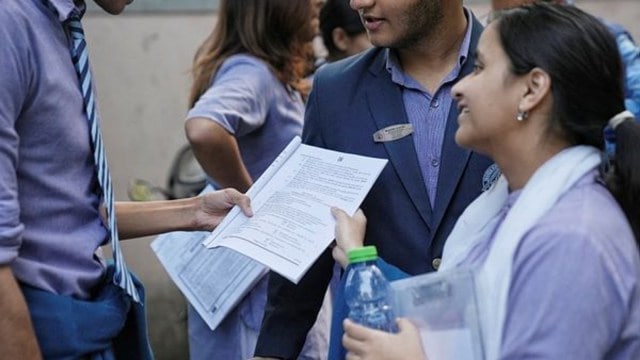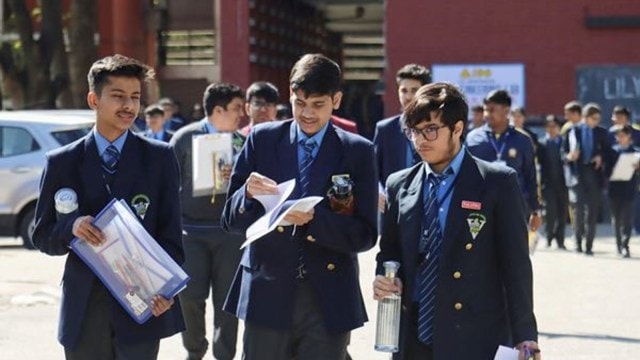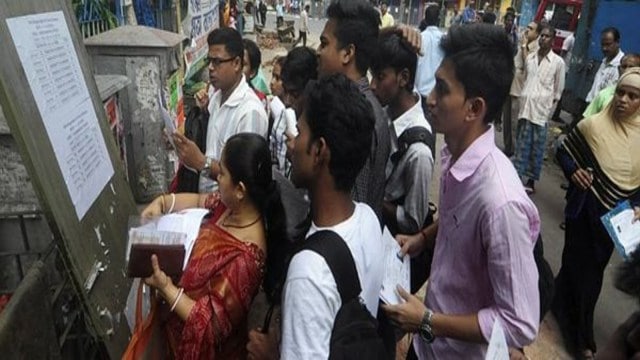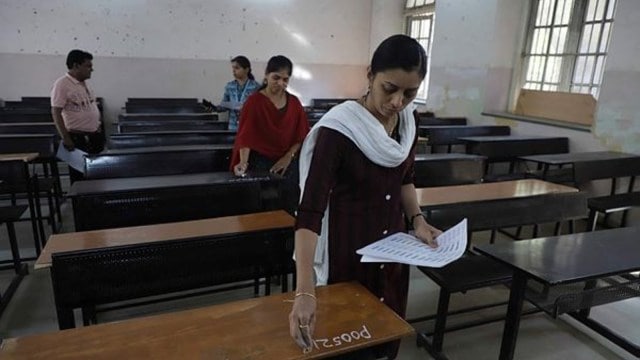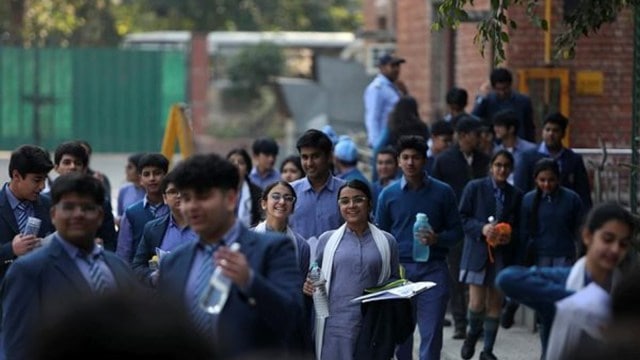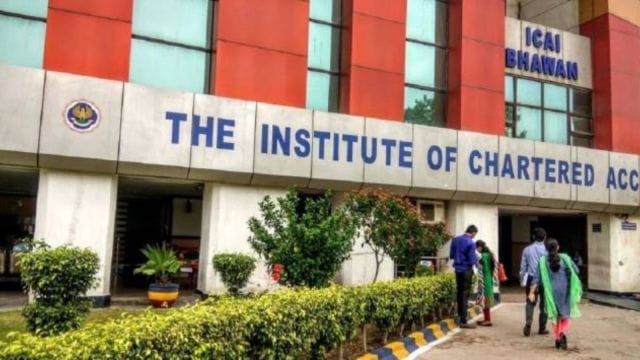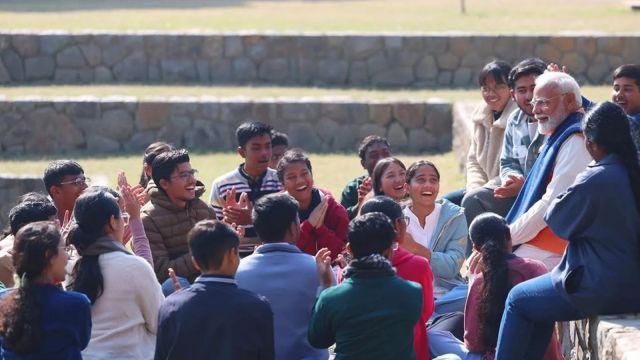
UPSC Key—16th January, 2024: World Economic Forum, Consumer Price Index and Multidimensional Poverty IndexPremium Story
Important topics and their relevance in UPSC CSE exam for January 16, 2024. If you missed the January 15, 2024 UPSC CSE exam key from the Indian Express, read it here
THE WORLD
War, climate change, AI tops charts as world leaders meet in Davos
Syllabus:
Preliminary Examination: Current events of national and international importance
Main Examination: General Studies II:Bilateral, regional and global groupings and agreements involving India and/or affecting India’s interests.
Key Points to Ponder:
• What’s the ongoing story-National security advisors of several countries met here on Sunday to discuss a peace formula for Ukraine and pushed for early restoration of peace in the war-hit country, with the host Switzerland asserting that India can play a key role with its influence and relations with Russia.
• Who initiated the World Economic Forum?
• What is the purpose of the World Economic Forum?
• Where is World Economic Forum held?
• What happens at WEF?
• Who funds the WEF and why is the WEF Meeting held at Davos?
• What else happens at WEF?
• World Economic Forum and India-connect the dot
• For Your Information- German professor Klaus Schwab founded the WEF. He was a mechanical engineering graduate who then earned a Master of Public Administration degree from the John F. Kennedy School of Government at Harvard University. From 1972 to 2003, Schwab was a professor of business policy at the University of Geneva. He founded WEF in 1971, originally known as the European Management Forum. It introduced the concept of “stakeholder capitalism.” According to Schwab, “It is a form of capitalism in which companies do not only optimize short-term profits for shareholders, but seek long term value creation, by taking into account the needs of all their stakeholders, and society at large.”
The WEF website says of the idea: “A company should serve all its stakeholders, not just its shareholders: employees, suppliers, and the community it is part of.” As an extension of this, business, government and civil society leaders have made their way to the high Alps “to consider the major global issues of the day and to brainstorm on solutions to address these challenges,” it adds. Initially, Professor Schwab focused the meetings on how European firms could catch up with US management practices. Events in 1973, namely the collapse of the Bretton Woods fixed exchange rate mechanism and the Arab-Israeli War, saw the Annual Meeting expand its focus from management to economic and social issues.
Two years later, the organisation introduced a system of membership for ‘the 1,000 leading companies of the world’. The European Management Forum was the first non-governmental institution to initiate a partnership with China’s economic development commissions in 1979 – the same year China and the US established diplomatic ties. Davos brings together some 3,000 participants (including paying members and selected invitees), among whom are investors, business leaders, political leaders, economists, celebrities and journalists, for up to five days to discuss global issues across 500 sessions. Thus, the WEF has become a forum for various stakeholders to meet and discuss global and regional socio-economic issues.
The WEF is largely funded by its partnering corporations. These are generally global enterprises with annual turnover greater than $5 billion. Davos was the setting for Thomas Mann’s novel The Magic Mountain. The book is the story of a young man who goes to Davos to stay at a sanatorium for three weeks and ends up spending seven years. Relaxed in its serene environs, it seeks to cut through the many distractions of global politics to succeed in its mission to create a more prosperous global economy.
In the past, it has been used as a location for pivotal international diplomacy as leaders can break tensions in the town. The WEF website states that North and South Korea held their first ministerial-level meetings in Davos. At the same Meeting, East German Prime Minister Hans Modrow and German Chancellor Helmut Kohl met to discuss German reunification.
In 1992, South African President de Klerk met Nelson Mandela and Zulu prince Mangosuthu Buthelezi at the Annual Meeting, their first joint appearance outside South Africa and a milestone in the country’s political transition. In 1998, participants emphasised the need to include major developing countries in the process. One idea was to set up a body to include 20 countries – half developed economies and the other developing ones. Such a meeting of what became known as the G20 was held in Bonn, Germany, later that year. Participation was restricted to finance ministers and its scope was limited to global finance.
The G20 meeting was eventually elevated to a summit. This happened in 2008 when the US hosted a G20 summit in Washington DC to address the impact of the global economic crisis. The WEF also went on to regularly publish global rankings and indices, such as the Global Competitiveness Report and the Global Gender Gap Report.
Other Important Articles Covering the same topic:
????DAVOS SUMMIT
????Chief economists expect global economy to weaken in 2024: WEF survey
EXPLAINED
What latest inflation data say
Syllabus:
Preliminary Examination: Economic and Social Development
Mains Examination: General Studies III: Indian Economy and issues relating to planning, mobilization, of resources, growth, development and employment.
Key Points to Ponder:
• What’s the ongoing story– According to the latest official release, India’s consumer price index (CPI) based inflation rate touched 5.7% in December. While this is a routine — monthly — release, its timing is significant for a variety of reasons. For one, from the point of fiscal policy, this is the last inflation data release before the presentation of the Union Budget on February 1. Two, from the point of monetary policy, it will be the most recent data available with the Monetary Policy Committee of the Reserve Bank of India before its reconvenes in later February. Lastly, this is the first release in the election year and, as such, it can be more politically significant than normal.
• What is CPI inflation?
• How is it calculated?
• For Your Information-The CPI inflation is nothing but the rate of inflation that consumers face. It is different from the major inflation indicator — the wholesale price index-based inflation rate. According to the Ministry of Statistics and Programme Implementation (MoSPI), which releases the data, the consumer price index measures “changes over time in general level of prices of a basket of selected goods and services that households acquire for the purpose of consumption”. At an all-India level, the current CPI basket comprises 299 items.
Apart from an aggregate index, consumer price indices are constructed for both rural and urban consumers as well. The “base year” for the current series of indices is 2012. In other words, the price index is given a value of 100 for 2012 and changes from these price levels are then calculated to arrive at inflation rates for each good or service.
According to the National Statistical Office within the MoSPI, the monthly price data is collected from 1181 villages and 1114 urban markets spread all across the country. The data for this purpose is collected on a weekly basis by the field staff of NSO. The CPI has six main components, each with differing weights and many more sub-components within them. The main components are—Food and beverages, Pan, tobacco and intoxicants, Clothing and footwear, Housing, Fuel and light and Miscellaneous (services such as education, health care etc.)
Among these, food articles currently weigh 45% of the total index. The second-biggest component is that of miscellaneous services. Within the food category, cereal prices are the biggest factor — they account for 9.67% of the total CPI. This means that a spike in prices of food articles like cereals, vegetables, milk and pulses tends to have the biggest impact in raising consumer inflation. And the reason why food articles have been given such a high weightage is that most Indian consumers tend to spend a considerable portion of their income towards meeting their food demand.
• What are its components?
• What does the data show?
• What is the significance?
• What is Inflation?
• Know the Types of Inflation like Moderate Inflation, Galloping Inflation, Hyper-Inflation, Stagflation, Deflation, Core Inflation etc.
• What are the causes of Inflation in the present situation
• How Inflation is Measured in India?
• What is the Long term, Medium Term and Short-term impact of Inflation?
• New Standard for Measuring Inflation in India and Old Standard for Measuring Inflation-Key Differences
• Steps or Measures Taken by GOI to Control Inflation
• What do you understand by Wholesale Price Index (WPI) and Consumer Price Index? WPI and CPI is published by whom?
• What’s the RBI assessment on inflation recently?
Other Important Articles Covering the same topic:
????Retail inflation surges to 4-month high; IIP dips to 8-month low
Darjeeling zoo’s snow leopards’ success: why wild cats are fussy breeders
Syllabus:
Preliminary Examination: General issues on Environmental ecology, Bio-diversity and Climate Change – that do not require subject specialization.
Mains Examination: General Studies III: Conservation, environmental pollution and degradation, environmental impact assessment.
Key Points to Ponder:
• What’s the ongoing story-The Padmaja Naidu Himalayan Zoological Park (PNHZP) in Darjeeling has made headlines for successfully breeding 77 snow leopards since the 1980s, placing it next only to New York’s Bronx Zoo, which has produced 80 snow leopard cubs since it started breeding experiments with the species in the 1960s. Breeding wild cats in captivity, however, is notoriously difficult — their edgy temperament, unique physiology and genetic baggage make them erratic breeders.
• Where are snow leopards found?
• Wild cats in captivity-Know in detail
• Do You Know-Snow leopards are native to the alpine regions of Central Asia. It is because of their thick fur that they are able to survive harsh cold climates. Even so, during the winter months, they are likely to descend to lower elevations. While the feline is a carnivore, no known human casualty has been recorded till now. Snow leopards mostly prey on blue sheep and mountain ibex and their smaller prey include hares, game birds and marmots. A snow leopard can kill prey that is up to three times its own weight. In India, snow leopards mainly inhabit the higher Himalayan and trans-Himalayan landscape at an altitude between 3,000-5,400 metres. These ranges span a combined area of about 1,00,000 sq km across Jammu and Kashmir, Ladakh, Himachal Pradesh, Uttarakhand, Sikkim, and Arunachal Pradesh. This area contributes to about five per cent of the global snow leopard range.
• What is the snow leopard project in India?
• Where was the project snow leopard launched in India?
• Mark on Map-Presence Snow leopard in India (States)
• What is Global Snow Leopard & Ecosystem Protection Program?
• Is India a part of Global Snow Leopard & Ecosystem Protection Program?
• What is the IUCN status of Snow Leopard?
• For Your Information-Dubbed the ghost of the mountain, the snow leopard’s first record in captivity dates back to 1891 when the London zoo acquired one from Bhutan. But it was not until the 1950s that captive born cubs became breeders themselves. After that breakthrough in the Copenhagen zoo, snow leopards have bred relatively well in captivity. By 1991, 98% of all snow leopards in zoos were captive bred. Big cats are known to proliferate under unusual circumstances. The US alone has over 10,000 mostly inbred captive tigers — that’s twice the species’ count in the wild. South Africa banned captive lion breeding in 2021 but does not know how to deal with more than 6,000 captive lions living on private ranches.
Yet, making big cats breed can be frustrating — even fraught with danger. Jittery male clouded leopards have killed the females on so many occasions that some animal fertility experts consider this shy species a bigger challenge than even hard-to-breed red pandas. However, clouded leopards are far from an exception. In 2019, London zoo put two tigers together after they spent 10 days in adjacent cages and showed encouraging signs of familiarity. Within minutes, a fight broke out and the 10-year-old Sumatran female was killed. More recently, a coalition of two male cheetahs was given access to a female inside an enclosure in Kuno national park last May in the hope that they might mate. The interaction turned violent and Dakhsha, the female from South Africa, died.
In the social structure of other cats such as tigers or leopards, a large male territory encompasses multiple female territories to ensure female fidelity. It is the opposite among cheetahs: females roam multiple male territories to pair with multiple males and guard against further genetic constriction of the species. In captivity, the female cheetah is ‘turned off’ by loss of mating choice. There is no authenticated record of cheetahs breeding in captivity until 1956, when a cub was born in Philadelphia zoo. Even today, only one in five captive cheetahs, male or female, breed. Female cheetahs come to oestrus throughout the year but show few outward signs unless they are interested in mating. Misreading oestrus and giving male cheetahs access to a female not in heat can lead to serious injuries.
The solution is to mimic the wild where the sexes rarely meet when not mating and typically get to know the other by smelling. A successful zoo model connects isolated male and female holding areas with a long pathway — dubbed lover’s lane — and takes males to female enclosures when it is time to sniff and tell. To test if a female is ready, she is taken away and a male is allowed down lover’s lane to sniff her now-empty yard. The male can tell from the smell if she is in heat. If he tries to attract her with a typical barking sound, she is released to join him. If he does not bark, he goes back down lover’s lane. Even when they oblige, few cheetah matings result in conception. A paper published in Science in 1983 found that all cheetahs are virtually twins or clones with very little genetic variation. Their sperm has low density and very high (70%) deformity. Post-conception, loss of foetuses is common. Only 5% of cheetah cubs survive to adulthood.
At present, two Indian zoos in Mysore and Jamnagar house 10 cheetahs. Neither has reported any cubs. Under the Cheetah Project launched in 2022 to establish the species in the wild, three cubs were born recently in captivity inside an enclosure in Kuno.
George Schaller, the world’s preeminent field biologist, described a snow leopard spotting in the Himalayas: “Wisps of clouds swirled around, transforming her into a ghost creature, part myth and part reality… Balanced precariously on a ledge and bitterly cold, I too stayed, unwilling to disrupt the moment… Then the snow fell more thickly, and dreamlike, the cat slipped away as if she had never been.” (Stones of Silence, 1980) No zoo can recreate that magic. But the success of Darjeeling zoo is a significant contribution to the global captive stock which is considered an insurance for the snow leopard’s dwindling numbers — anything between 4000 to 7000 — in the wild. Today, 160 zoos across the world house over 600 snow leopards
Other Important Articles Covering the same topic:
????Explained: Why India and world are counting snow leopards, and how
????With world’s largest number of Snow Leopards in captivity, how Darjeeling zoo, India’s lone Conservation Breeding Programme, scripted a success story
FRONT PAGE
Modi and Putin discuss ‘special strategic’ ties, future roadmap
Syllabus:
Preliminary Examination: Current events of national and international importance.
Mains Examination: General Studies II: Bilateral, regional and global groupings and agreements involving India and/or affecting India’s interests.
Key Points to Ponder:
• What’s the ongoing story– Prime Minister Narendra Modi and Russian President Vladimir Putin Monday had a “good conversation” in which they discussed a range of aspects related to the “special and privileged strategic partnership” between the two countries. In a post on X, Modi said he and Putin also agreed to chalk out a roadmap for future initiatives.
• How is Indo-Russia Relations?
• Important areas of cooperation between India and Russia-know in detail
• Area of contention between India and Russia-know in detail
• Why Russia is significant for India?
• Why India is significant for Russia?
• How much trade does India have with Russia?
• Russia plays a very important role in logistical as well as technological support when it comes to defence forces- Know India and Russia Military trade
Other Important Articles Covering the same topic:
????Russia deeply cherishes equal and respectful relations with India: Envoy
ECONOMY
Crisis can impact India as 80% of exports to Europe takes place via Red Sea: Official
Syllabus:
Preliminary Examination: Current events of national and international importance.
Mains Examination: General Studies II: Effect of policies and politics of developed and developing countries on India’s interests, Indian diaspora.
Key Points to Ponder:
• What’s the ongoing story-The Red Sea shipping crisis could impact India’s exports to Europe the most as about 80 per cent of the outbound shipments to Europe takes place through the Red Sea region, the commerce and industry ministry said on Monday.
• Map Work-Red Sea
• Why is the Red Sea significant and why are ships being attacked there?
• Could the Red Sea attacks impact the global economy?
• “Red Sea shipping crisis could impact India’s exports to Europe”-Discuss
• What exactly commerce and industry ministry said?
• For Your Information-The ministry said that there has been an increase in attacks on commercial shipping vessels travelling through the lower Red Sea since mid-November and 80 per cent of India’s merchandise trade with Europe passes via Red Sea. “The cost is increasing due to the Red Sea disruption. But ultimately it will depend on demand. The US exports are also through the Suez route. Transport charges are surging. An additional congestion surcharge is also being charged. But if the demand is robust the shipments will go.
“If they are not time sensitive products they will move. It is a global issue. Whole of commodity moves from the eastern to the western part through the Red Sea route,” commerce secretary Sunil Barthwal said at a press briefing. The ministry said that the Red Sea region is vital for 30 per cent of global container traffic and 12 per cent of global trade and about 95 per cent of vessels have rerouted around the Cape of Good Hope, adding 4000 to 6000 nautical miles and 14 to 20 days to journeys. “Consignment has been put on hold due to high freight and surcharges (as per EPCs). The sailing of most of the ships have been impacted and generally postponed by 2-3 weeks as the incoming ships, with longer routes, are delayed. As of now, container availability has not been seen as an issue as adequate empties are available. However, the combined impact of higher freight costs, insurance premiums, and longer transit times could make imported goods significantly more expensive,” the ministry said. Indian shipments of low value products such as agriculture and textiles to Europe are primarily expected to face the impact of disruption in the Red Sea region.
Amid deepening tensions in the West Asia region, External Affairs Minister S Jaishankar on Sunday started his two day visit. The union government is also mulling on using alternate trade routes and has asked Export Credit Guarantee Corporation (ECGC) not to raise insurance premiums amid rising cost of shipping to Europe.
Other Important Articles Covering the same topic:
????Red Sea attacks, Panama Canal drought: How trouble at two shipping choke points could impact global trade
India’s multidimensional poverty rate down to 11.28% in 2022-23 from 29.17% in 2013-14
Syllabus:
Preliminary Examination: Economic and Social Development
Mains Examination:
• General Studies II: Issues relating to poverty and hunger
• General Studies III: Inclusive growth and issues arising from it
Key Points to Ponder:
• What’s the ongoing story- The share of India’s population living in multidimensional poverty is estimated to have fallen to 11.28 per cent in 2022-23 from 29.17 per cent in 2013-14, according to a discussion paper released by NITI Aayog on Monday. In absolute numbers, NITI Aayog estimates a total of 24.82 crore people escaped multidimensional poverty in the last nine years.
• What exactly NITI Aayog said in a report?
• For Your Information-States like Uttar Pradesh, Bihar, Madhya Pradesh, and Rajasthan recorded the sharpest decline in the number of people classified as poor based on the Multidimensional Poverty Index (MPI), which considers twelve different indicators of poverty included under three broad dimensions, namely health, education, and standard of living. The discussion paper also notes that the severity of deprivation declined at a slightly lower rate between 2015-16 and 2019-21 compared to 2005-06 and 2013-14.
Severity of deprivation measures deprivations the average multidimensionally poor person suffers from. At the same time, reduction of deprivation was faster after 2015-16 in terms of reduction in share of MPI poor out of total population compared to the decade before, owing to a lesser number of years. In 2005-06, the share of MPI poor in India’s total population was 55.34 per cent. The discussion paper, which uses previously released MPI data based on National Family Health Surveys (NFHS) conducted in 2015-15 and 2019-21, also uses NFHS-3 data from 2005-06 to understand long-term poverty trends.
Based on these three NFHS datasets, NITI Aayog estimated the share of MPI poor in the years 2013-14 and 2022-23 with technical inputs from Oxford Policy and Human Development Initiative (OPHI) and United Nations Development Programme (UNDP). The discussion paper was released by NITI Aayog Member Prof. Ramesh Chand in the presence of NITI Aayog CEO BVR Subrahmanyam.
Prof. Chand noted that without the impact of the coronavirus pandemic, the share of MPI poor in 2022-23 would have been much lesser. The paper also notes that it “may not fully reflect the impact of Covid on the economy” as part of NHFS-5 data collected between 2019-21 was collected before the pandemic. BVR Subrahmanyam added that India is likely to achieve Sustainable Development Goals (SDG) Target 1.2, which calls for reducing “at least by half the proportion of men, women and children of all ages living in poverty in all its dimensions according to national definitions” much ahead of 2030.
As per the paper, indicators in the standard of living dimension showed highest levels of deprivation in 2005-06. For instance, 74.4 per cent of the population was deprived of cooking fuel in 2005-06, which fell to 58.47 per cent in 2015-16, and further to 43.9 per cent between 2019-21. Similarly, 70.92 per cent of the population was deprived of adequate sanitation facilities in 2005-06, which reduced to 51.88 per cent in 2015-16, and further to 30.93 per cent between 2019-21.
The sharpest decline between two periods was recorded by the indicator measuring deprivation of access to bank accounts, which fell to 9.66 per cent in 2013-14 from 58.11 per cent in 2005-06. According to the estimated share of MPI poor in 2013-14 and 2022-23, Bihar recorded a 53 per cent drop from 56.3 per cent share of MPI poor in 2013-14 to 26.59 per cent in 2022-23. Jharkhand also recorded a 50 per cent drop from 47.13 per cent share of MPI poor to 23.34 per cent. Uttar Pradesh, which had a lesser share of MPI poor in 2022-23 than Bihar, Jharkhand, and Meghalaya, recorded a decline to 17.4 per cent from 42.59 per cent in 2013-14.
India’s definition of multidimensional poverty is measured using twelve indicators including nutrition, child & adolescent mortality, maternal health, years of schooling, school attendance, drinking water, electricity, housing, and assets. MPI seeks to measure poverty in a more holistic manner as opposed to solely relying on income levels to assess deprivation.
• What is multidimensional poverty Index?
• MPI uses three dimensions and ten indicators-Know in detail the dimensions, indicators, deprivation cutoffs, and weights of the global Multidimensional Poverty Index
• “India’s progress shows that Sustainable Development Goal 1.2 to reduce poverty is feasible, even at a large scale,”-How India reduced poverty?
• What is Poverty?
• How poverty is defined by different international institutions??
• What has the Multidimensional Poverty Index stated about India’s poverty levels?
• Classifications of poverty-Know in Detail (Hint: Absolute and Relative)
• Poverty estimation in India-How Poverty is defined in India?
• Alagh Committee (1979) Lakdawala Committee (1993), Tendulkar Committee (2009), Rangarajan committee (2012) and their poverty estimation.
• What do you understand by the term ‘head-count ratio’?
• What do understand by Private Final Consumption Expenditure (PFCE) and Government Final Consumption Expenditure (GFCE)?
• Poverty Alleviation Programs in India by Government of India
• What is keeping Indians multidimensionally poor?
• How have various states fared in the multidimensional poverty index?
Other Important Articles Covering the same topic:
????Why one in seven Indians continues to be bracketed as ‘multidimensionally poor’
For any queries and feedback, contact priya.shukla@indianexpress.com The Indian Express UPSC Key is now on Telegram. Click here to join our channel and stay updated with the latest Updates.

 Posts
Posts Sign up as a Teacher
Sign up as a Teacher